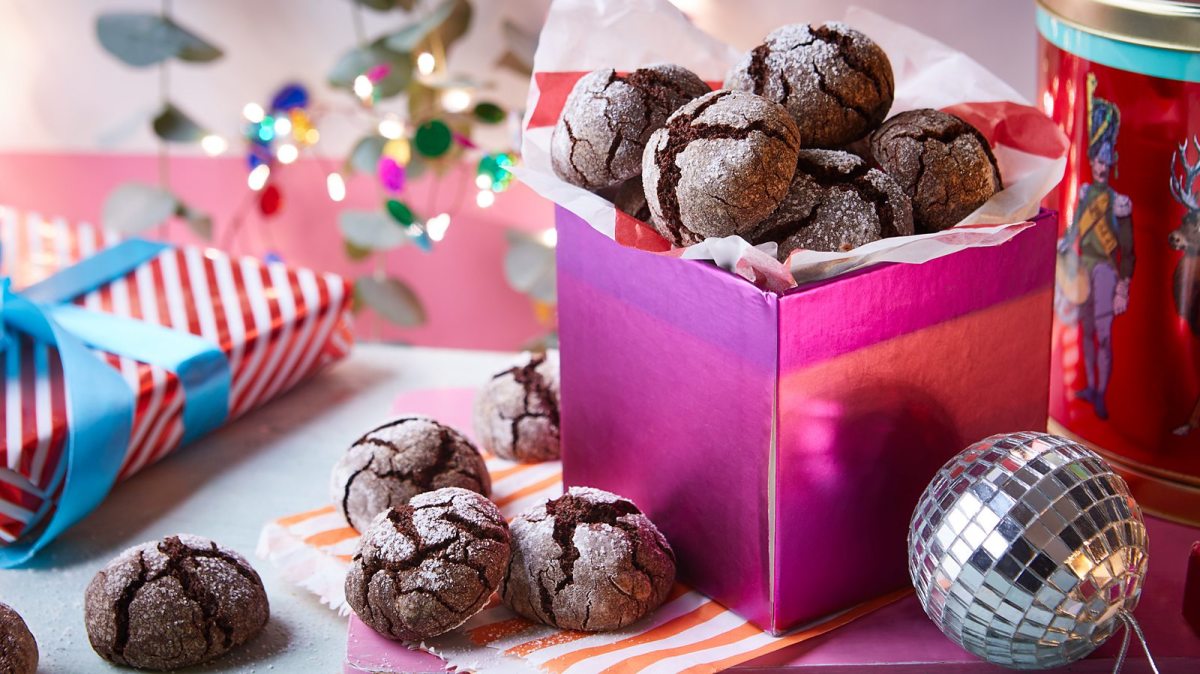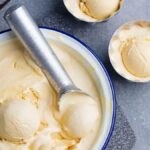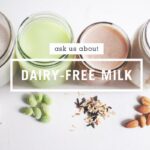Embark on a culinary adventure into the world of dairy-free delights! This guide unveils the secrets to creating incredibly flavorful and satisfying meals and desserts, even without dairy. Learn to master dairy-free baking techniques, explore a diverse range of plant-based milks and ingredients, and discover innovative substitutions that won’t compromise on taste or texture. Prepare to transform your kitchen into a haven of creamy sauces, fluffy cakes, and decadent desserts, all while embracing a healthier and more inclusive approach to cooking.
From the velvety richness of coconut milk in a dreamy curry to the surprising versatility of cashew cream in elegant desserts, we’ll explore a spectrum of dairy-free alternatives and techniques. We’ll delve into the nuances of baking with plant-based milks, mastering the art of creating light and airy cakes and flaky pie crusts. This journey will equip you with the confidence and knowledge to effortlessly adapt your favorite recipes and create entirely new dairy-free masterpieces.
Popular Dairy-Free Ingredients

Dairy-free cooking and baking offer a world of delicious possibilities, expanding culinary horizons for those with dietary restrictions or preferences. Mastering the unique properties of various dairy-free alternatives is key to achieving successful and flavorful results. Understanding their textures, flavor profiles, and nutritional benefits will empower you to confidently create delectable dishes.
Top Dairy-Free Milk Alternatives
Choosing the right dairy-free milk alternative depends heavily on the recipe. Each option brings its own distinct characteristics to the table, impacting both the final taste and texture. Here’s a closer look at five popular choices:
| Milk Type | Flavor Profile | Texture | Nutritional Highlights |
|---|---|---|---|
| Almond Milk | Mildly sweet, subtly nutty | Generally thin, can be watery depending on brand | Low in calories, good source of Vitamin E |
| Soy Milk | Slightly beany flavor, can be fortified | Creamier than almond milk, can be slightly thick | High in protein, good source of calcium and iron (when fortified) |
| Oat Milk | Slightly sweet, creamy oat flavor | Creamy, often thicker than almond or soy milk | Good source of fiber, naturally creamy |
| Coconut Milk (full-fat) | Rich, sweet coconut flavor | Very creamy, thick | High in saturated fat, good source of Vitamin C and minerals |
| Cashew Milk (homemade) | Mild, slightly sweet, creamy | Very smooth and creamy, adaptable to different thicknesses | Good source of healthy fats, magnesium and phosphorus |
Coconut Milk: Creamy Coconut Curry
Coconut milk, with its luxuriously creamy texture and subtle sweetness, is a versatile ingredient in both sweet and savory dishes. This recipe highlights its creamy potential in a vibrant curry.
Ingredients:
- 1 tbsp coconut oil
- 1 onion, finely chopped
- 2 cloves garlic, minced
- 1 inch ginger, grated
- 1 red bell pepper, chopped
- 1 can (13.5 oz) full-fat coconut milk
- 1 cup vegetable broth
- 1 tbsp curry powder
- 1 tsp turmeric
- 1/2 tsp cumin
- Salt and pepper to taste
- 1 cup cooked chickpeas
- Fresh cilantro, chopped (for garnish)
Instructions:
- Heat coconut oil in a large pot over medium heat. Add onion and cook until softened, about 5 minutes. The onions will become translucent and slightly caramelized, releasing their sweet aroma.
- Stir in garlic and ginger and cook for another minute until fragrant. The kitchen will fill with the pungent, warm aroma of ginger and garlic.
- Add bell pepper and cook for 3-5 minutes until slightly tender. The peppers will soften and their vibrant color will deepen.
- Pour in coconut milk and vegetable broth. Stir in curry powder, turmeric, and cumin. The mixture will become a rich, fragrant, and slightly thick sauce.
- Bring to a simmer and cook for 10-15 minutes, allowing the flavors to meld. The curry will develop a deeper, more complex flavor as it simmers.
- Stir in chickpeas and season with salt and pepper to taste. The chickpeas will absorb some of the delicious sauce.
- Garnish with fresh cilantro before serving. The bright green cilantro adds a fresh, contrasting pop of color and flavor.
Cashew Cream: A Versatile Dairy-Free Staple
Cashew cream is a remarkably versatile dairy-free ingredient, easily transforming into creamy sauces, decadent desserts, and smooth dips. Its preparation involves soaking cashews to achieve a smooth, creamy texture.
The raw cashews, initially dry and firm, become plump and soft after soaking in hot water for at least 30 minutes. This process is crucial for achieving a luxuriously smooth texture. Once blended, the cashew cream possesses a pale ivory color, with a texture akin to thick, velvety yogurt.
Examples of Cashew Cream Usage:
- Dairy-Free Alfredo Sauce: Cashew cream forms the base, blended with nutritional yeast for a cheesy flavor, garlic powder, and lemon juice for brightness. The resulting sauce is a pale yellow, with a thick, creamy consistency that clings beautifully to pasta.
- Vegan Chocolate Mousse: Blended with melted dark chocolate, cocoa powder, and a touch of maple syrup, cashew cream creates a rich, decadent mousse. The mousse will be a deep, dark brown, with an incredibly smooth and airy texture.
- Spicy Cashew Dip: Cashew cream is combined with roasted red peppers, jalapeños, lime juice, and cilantro for a vibrant, flavorful dip. The dip will have a bright orange-red hue, with a creamy yet slightly chunky texture from the roasted peppers.
Recipe Adaptation and Troubleshooting
Adapting your favorite recipes to be dairy-free requires understanding the role dairy plays and finding suitable replacements. This involves more than just swapping ingredients; it’s about understanding the impact of those changes on texture, flavor, and overall recipe success. This section provides a practical guide to successfully navigating this process.
Dairy-Free Ingredient Substitutions
Many traditional recipes rely on dairy for richness, creaminess, and binding properties. Successfully adapting these recipes necessitates thoughtful substitutions. The following table Artikels common dairy ingredients and their effective dairy-free counterparts, along with potential challenges and considerations.
| Traditional Ingredient | Dairy-Free Substitute | Impact on Recipe | Potential Challenges |
|---|---|---|---|
| Butter | Coconut oil, vegan butter, olive oil | Coconut oil adds a distinct coconut flavor; vegan butter mimics butter most closely; olive oil adds a fruity note and can impact browning. | Coconut oil can solidify at room temperature, impacting texture. Vegan butter may not brown as well as traditional butter. Olive oil’s flavor profile might be overpowering in some dishes. |
| Milk (whole, 2%, etc.) | Almond milk, soy milk, oat milk, coconut milk | Different milks have varying fat content and sweetness levels, impacting texture and flavor. | Some milk alternatives may separate when heated, resulting in a grainy texture. The sweetness of some milk alternatives may need to be adjusted. |
| Cream Cheese | Cashew cream, tofu cream cheese | Cashew cream provides a rich, smooth texture; tofu cream cheese offers a tangier, firmer texture. | Cashew cream requires soaking and blending. Tofu cream cheese may need additional seasoning to match the flavor of cream cheese. |
| Sour Cream | Coconut cream, vegan sour cream | Coconut cream provides a rich, slightly sweet flavor; vegan sour cream closely mimics the tang of sour cream. | Coconut cream can be quite thick and may require thinning. The texture and tanginess of vegan sour cream may vary depending on the brand. |
| Cheese (cheddar, mozzarella, etc.) | Vegan cheese shreds, nutritional yeast | Vegan cheese shreds offer a variety of flavors and melting properties; nutritional yeast provides a cheesy flavor but not the same texture. | Melting properties of vegan cheese can vary widely. Nutritional yeast is best used as a seasoning or in sauces. |
Troubleshooting Common Baking and Cooking Issues
Baking and cooking with dairy-free alternatives often presents unique challenges. Understanding these challenges and implementing effective troubleshooting strategies is key to success. For example, a lack of richness in dairy-free baked goods can often be addressed by incorporating additional healthy fats like avocado oil or incorporating ingredients like mashed sweet potato or silken tofu to add moisture and richness. Similarly, texture issues, such as crumbly baked goods, might be improved by adding a binding agent like flaxseed meal or applesauce.
Enhancing Flavor and Texture in Dairy-Free Cooking
To create truly delicious dairy-free meals, focusing on enhancing flavor and texture is crucial. For instance, using flavorful broths and stocks adds depth to soups and stews. Adding a touch of acidity, like lemon juice or vinegar, can brighten up dishes and balance richness. Experimenting with herbs, spices, and umami-rich ingredients like mushrooms and nutritional yeast can create complex and satisfying flavors. Finally, toasting nuts and seeds before incorporating them into recipes brings out their nutty flavors and adds a delightful crunch. Remember, patience and experimentation are key to mastering dairy-free cooking.
Unleash your inner culinary artist and confidently navigate the world of dairy-free cooking. This comprehensive guide has provided you with the foundational knowledge, innovative techniques, and delicious recipes to embark on a delightful dairy-free journey. From mastering the subtle sweetness of coconut milk to crafting decadent dairy-free chocolate treats, you now possess the skills to create culinary wonders that are both healthy and incredibly satisfying. So, embrace the challenge, experiment with flavors, and savor the incredible results – the world of delicious dairy-free cuisine awaits!
Questions Often Asked
What are some common mistakes to avoid when baking dairy-free?
Overmixing batters can lead to tough textures. Using the wrong type of flour can affect rise and crumb structure. Not properly measuring ingredients can impact the final outcome.
Can I freeze dairy-free baked goods?
Yes, many dairy-free baked goods freeze well. Wrap them tightly to prevent freezer burn and thaw completely before serving.
Are all dairy-free products suitable for vegans?
Most are, but always check the ingredient list to ensure they don’t contain any animal products like honey or whey.
Where can I find dairy-free substitutes for specific ingredients?
Many health food stores and online retailers offer a wide variety of dairy-free alternatives. You can also find helpful substitution guides online.


